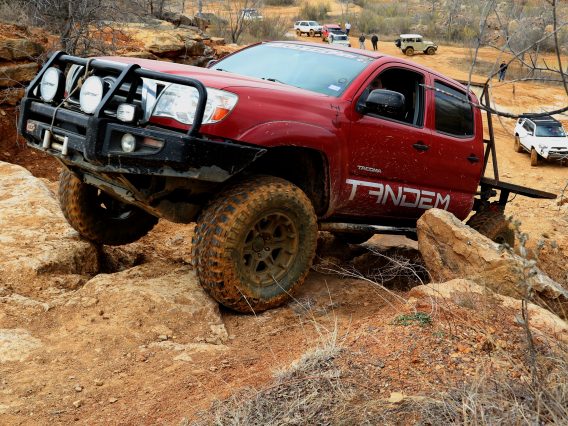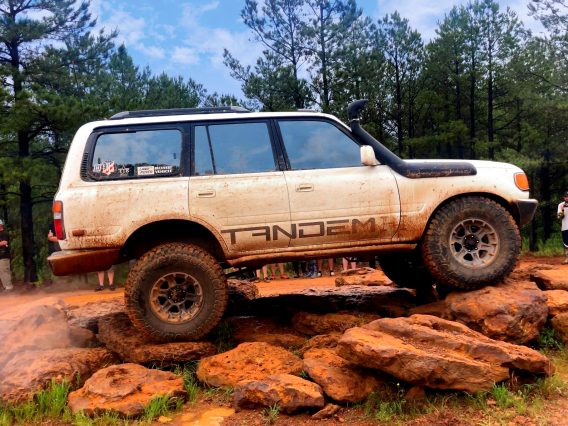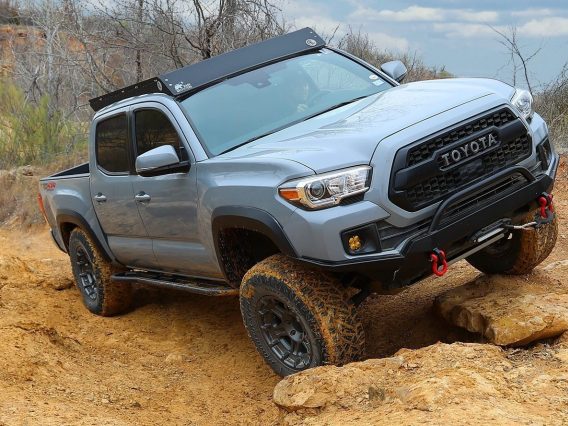2G SEQUOIA BUYERS GUIDE
"The most under-rated Toyota?"
Score of out of 5
The 2G Sequoia was released was released in November 2007 and is the largest SUV in Toyota's line-up. Dismissed by enthusiasts because of it's independent rear suspension and large size for many years. But were they wrong?
Alex's Sequoia before all the mods
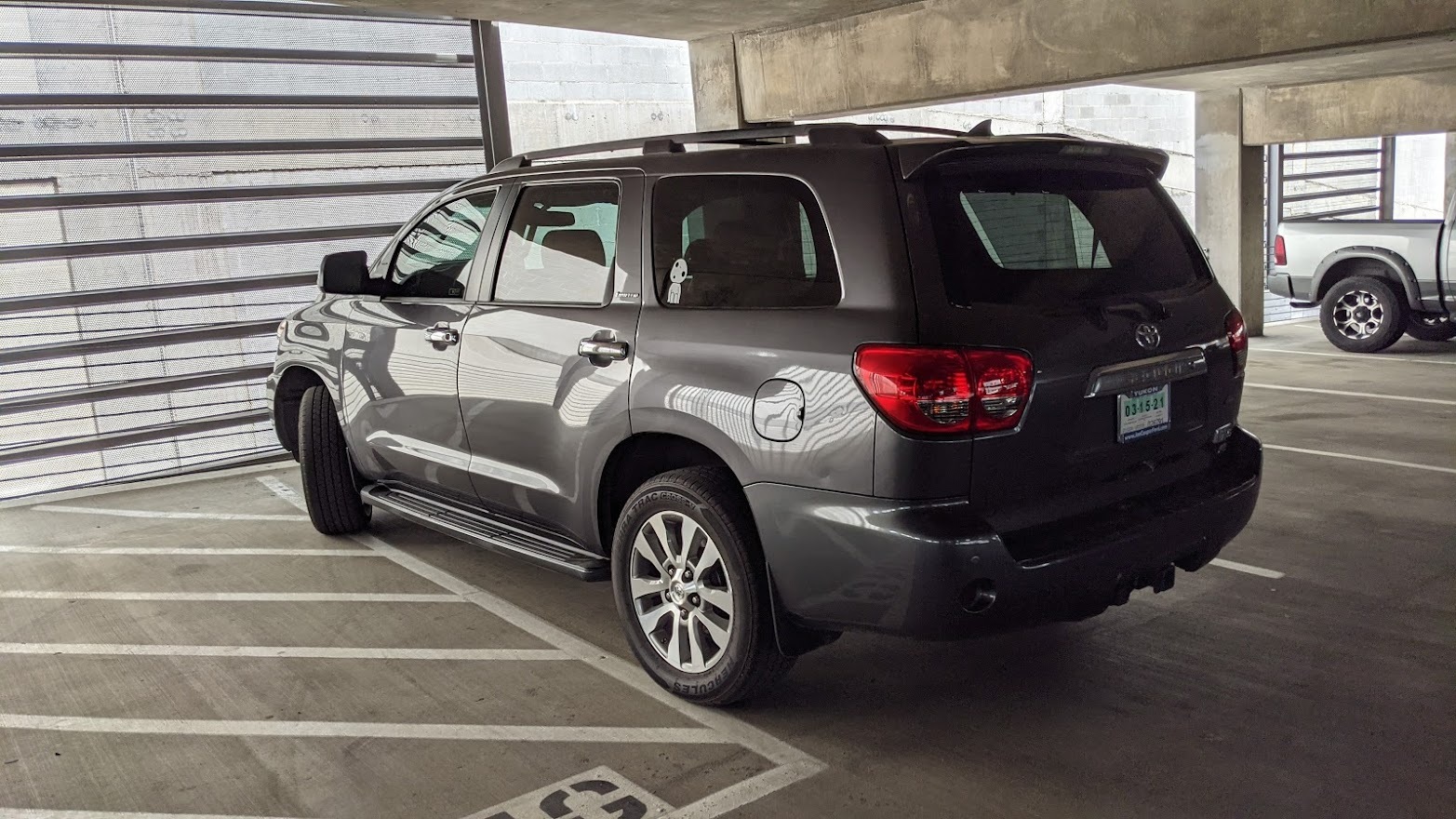
The Numbers
| 2G Sequoia | 200 Series Land Cruiser | 5G 4Runner | |
| Wheelbase (in) | 122 | 112 | 109.8 |
| Track Width (F) (in) | 67.9 | 65 | 63.2 |
| Track Width (R) (in) | 69.1 | 64.7 | 63.2 |
| Length (in) | 205.1 | 194.9 | 190.2 |
| Width (in) | 79.9 | 78 | 75.8 |
| Turning radius (ft) | 19.1 | 19.35 | 18.7 |
| Towing Capacity (lbs) | 7100 | 8100 | 5000 |
| Cargo Volume Behind Front Seats (cu.ft.) | 120.1 | 81.3 | 89.7 |
| Cargo Volume Behind Second Row (cu.ft.) | 66.6 | 53.7 | 47.2 |
| Cargo Volume Behind Third Row | 18.9 | 16.3 | 9 |
| Gas Mileage MPG | 13/17 | 13/17 | 16/19 |
What The Numbers Mean
So as you can see, the Sequoia has a huge advantage in interior room compared to the Land Cruiser and the 4Runner. Biggest advantage is the cargo volume behind the front seats at 120 cu.ft. That's 47% more rear space than a Land Cruiser and 33% more rear space than a 4Runner. But when we measure the overall length the Sequoia is only 2.5% (5.1 in) longer than a Land Cruiser and 7.8% (14.9 in) longer than a 4Runner. Even though the Sequoia appears to be quite large, the exterior dimensions are only marginally larger. The amount of interior space you get is well worth the slightly larger exterior dimensions.
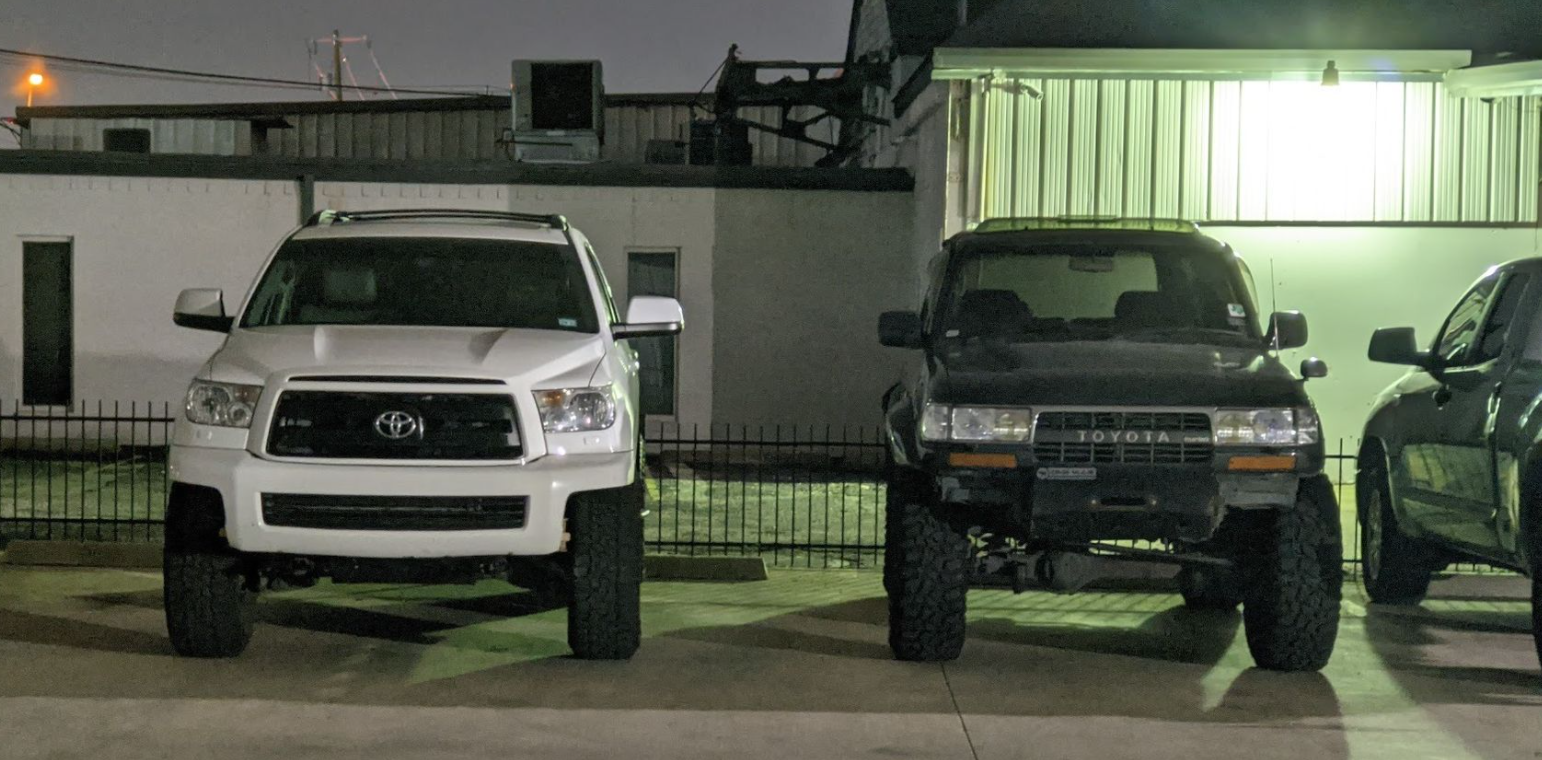
What about the powertrain?
The Sequoia came available with three powertrains. The 276 hp 4.7 liter 2UZ, the 310 hp 4.6 liter 1UR, and the 381 hp 5.7 liter 3UR.
The 2UZ engine is a timing belt engine and requires a timing belt change every 80k miles but this engine is extremely reliable and has proven itself in the previous generation Sequoia, Tundra, GX470, and 4Runner, as well as the 100 series Land Cruiser. The 2UZ was derived from the 4.0 liter 1UZ which has been in production in the LS400 (and later on the SC400 and GS400) since 1989. This engine is extremely reliable and is paired with an equally reliable A750E (2WD) or A750F (4WD) transmission. This engine is a decent match for the Sequoia and it hits 0-60 in about 10 seconds. If you are on a budget you will be able to find these for a pretty good price. The 2UZ was offered in 2008 and 2009 and then it was replaced by the 1UR.
The 310hp 1UR replaced the 2UZ for 2010 as the base engine. In addition to getting a bump in horsepower, the 1UR is mated to a 6 speed A760E/F transmission. The 1UR and the A760 bring the Sequoia's 0-60mph times down into the mid 8 second mark. The 1UR made its debut in 2007 in the LS460, however, in the LS460 the 1UR made 380hp. For truck duty, the 1UR is tuned for torque.
The top of the line engine in the 2G Sequoia is the 5.7 liter 3UR. This engine is mated to the AB60E/F transmission. The 3UR and the AB60 move the 2G Sequoia with authority, getting this beast up to 60mph from an standstill in the low 6 seconds. Fortunately, this engine is what most Sequoia's are equipped with and they are relatively easy to find. The 3UR came in two variants: the 3UR-FE and the 3UR-FBE. The 3UR-FE is designed to run on gas up to E10 and the 3UR-FBE is designated as a flex fuel engine and is capable of running up to E85. The 3UR-FBE is known to have some issues distinguishing what type of fuel is in it from time to time, giving it weird idling issues. Even so, it is still an exceptionally reliable engine.
All 4wd Sequoia's have an electronically operated transfer case that technically have 5 modes: 2HI, 4HI, 4HI with center diff locked, 4LO, and 4LO with center diff locked. The transfer case is equipped with a TORSEN center differential which is capable of distributing power to whichever axle has the most traction. This differential works great in situations where all four wheels have traction and is very effective. However, should one wheel lose grip then the TORSEN effectively becomes an open differential. In situations where maximum traction is needed, the center differential can be locked, effectively splitting power evenly between the front and the rear axle. The center differential should only be used in situations where traction is very low. Use of the center differential on high traction surfaces could result in damage to the transfer case.
The front differential is a reverse cut 9in unit and is the same as the unit found in the Tundra and very similar to the one found in the 200 series Land Cruiser. The Sequoia and Tundra front differential have a mechanism that disconnects the differential from the drive wheels when in 2HI. The Land Cruiser is a Full time AWD system and thus the front differential does not have that mechanism. Every 4WD 2G Sequoia regardless of the engine or trim has a 9in front differential. All Sequoia's come with a super beefy 10in rear differential. This unit is not found in any other Toyota. It is specially made for the Sequoia since the Sequoia has independent rear suspension (IRS). Final drive ratio for the Sequoia's are 4.10 or
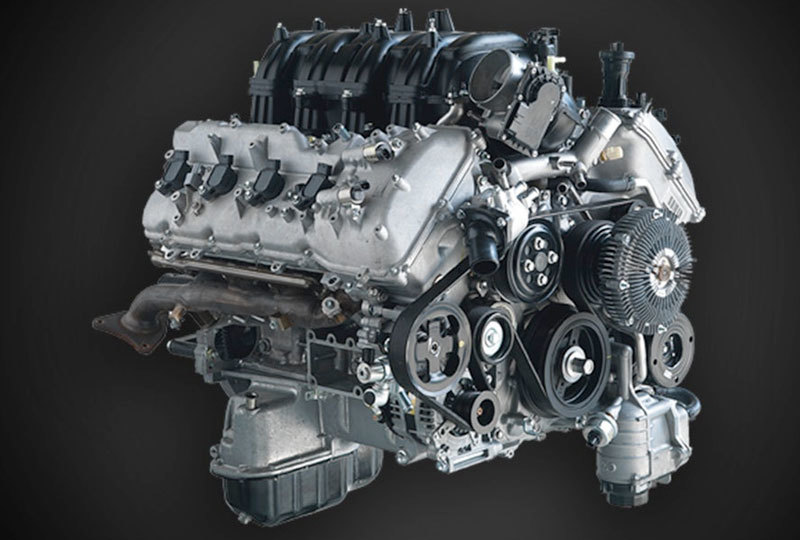
2G Sequoia Features
DRCC
Dynamic Radar Cruise Control - This is a feature available in the Platinum model. DRCC uses a radar to slow the Sequoia down if it detects a vehicle in front of it while the cruise control is engaged. This feature is great on road trips. And while the feature works great for the most part, it does act funny enough that you don't want to trust it. Sometimes it seems to not register a vehicle in front of it or it seems to wait too long to brake if there's an incoming traffic jam.
Air Suspension
The air suspension in the 2G Sequoia is really well engineered. It's extremely tough. It works really well for towing or overlanding. Air suspension allows you to have your cake AND eat it too. When the vehicle is unloaded the spring rate is soft and you get a nice ride and good vehicle stance. As you load it down, the air suspension compensates and keeps the vehicle level. Also, the IRS seems to really like high spring rates so you can trick the air suspension into giving you a lift and the ride wont be harsh like it would be on a solid axle vehicle with.
Second Row: Bench vs. Captains Chairs vs. Captains Chairs w/ Console
Depending on the trim level you have several second row options. SR5 and Limited's came with bench seats as standard. Optional on the Limited trim is the captains chairs. The captain's chairs in the limited trim is rare since it is an optional upgrade. Limited's with captains chairs in the second row had a little runway between the two captains chairs. On the Platinums you get captains chairs that are heated. Between the two captains chairs is a center console that features two cup holders, the controls for the second row heated seats, and storage. The center console can flip forwards to become a table. When all the seats are folded down, the center console in table mode gives you a really flat area to store large objects.
Entertainment Center
Some Sequoia's come with an entertainment center installed. If it comes with a Toyota Unit then it can be controlled through the head unit.
Power Folding Third Row
Some Sequoia's came with a power folding third row seat. This allows you to bring the seats up and down with the touch of a button. Some SR5 trim levels came with manual folding third row seats
Power Folding Mirrors
Power folding mirrors are standard on Limited and Platinum trims. Power folding mirrors allow you to fold the side view mirrors at the touch of a button.
Second and Third Row Sunshades
This is an excellent feature. There are shades build into the doors and the rear side panels that can be pulled up manually to give some protection from the sun. These are definitely standard on the Platinum models. On the SR5 Models we have heard that sometimes only the second row has them.
Chronology
2008
2G Sequoia is released. Available with either the 4.7 liter 2UZ V8 or the 5.7 liter 3UR V8
2009
-Flex Fuel 5.7 liter available in 4WD models in non-California emission states.
-A new Sport Appearance Package was available for the Toyota SR5 grade 5.7-liter models with 2WD or 4WD. The package included seven-passenger seating, 20-inch alloy wheels with a unique finish, color-keyed sport grille, rear spoiler, fog lamps, power driver's seat, and a black fabric interior. The Sport Appearance Package was available in three colors: Super White, Silver Sky and black.
2010
-Base engine 4.7 liter 2UZ with A750 is replaced with 4.6 liter 1UR with A760. HP goes from 276 to 300.
-The 2010 Sequoia added a wide array of standard features across all grades, making the Sequoia close to mono spec. Among the many added standard features were a Cold Kit, Tow Package added to the SR5, driver and passenger knee airbags, USB iPod connectivity, Bluetooth® on all standard audio systems, power driver's seat, daytime running lights, fog lamps, running boards, moonroof, roof rack, and rear spoiler.
-Three new colors were added: Blizzard Pearl replaces Arctic Frost; Sandy Beach Metallic replaces Desert Sand Mica; and Spruce Mica replaces Timberland Mica.
2011
-The Toyota Sequoia full-size sport utility vehicle moves into 2011 with brake override technology as standard equipment and minor interior trim changes. The trailer hitch connector is now the same as on the Tundra full-size pickup truck, and there is a new off switch for the standard Daytime Running Lights.
2012
-For 2012 model year the Sequoia added an extra measure of towing safety with the addition of Trailer Sway Control. In addition, a new Blind Spot Monitor was made available on the Sequoia Platinum grade, enhancing driving safety by warning drivers of vehicles traveling in their blind spots.
2013
-4.6 liter engine dropped. All Sequoias are now only available with the 5.7 liter V8 engine.
-Additional changes included the addition of the available Entune multi-media system and a Toyota-first new Blu-ray rear seat entertainment system, which was standard on the Platinum grade and optional on the Limited.
2014
-Sequoia SR5 grade adds the new Entune Audio Plus system, while the Limited gets Entune Premium Audio and the Platinum grade has Entune Premium JBL® Audio.
2015
2016
2017
2018
-Updated exterior. New headlight and grille design.
-Toyota Safety Sense is now available
-New Guage Cluster Available
-TRD Sport trim now available. TRD Sport trim features a new front grille, metallic black mirror caps, 20-inch alloy wheels, darkened rear taillight housing, TRD Sport shift knob, TRD Sport floor mats, TRD Sport sill protectors, Bilstein shocks, and TRD front and rear anti-roll bars.
2019
2020
2021
2022
Known Issues
While the 2G is an exceptionally well built and supremely reliable vehicle, it is still subject to the laws of physics. Gaskets will leak, bushings will deteriorate, fluid will lose its lubricity, etc. In order to keep a truck completely reliable it is important to perform maintenance when maintenance is due. For this reason we always recommend buying a vehicle with as much service history as possible. Money saved in the front end (by buying a high mileage vehicle) will usually catching up to you in terms of maintenance later on.
Rear Tail Gate Rust
Check the inside of the bottom of the rear hatch for corrosion. This means that the electronics inside the rear hatch are compromised and you may need to replace then within a few years.
Leaky Water Pump
While not unreliable, it is something that eventually will need to be serviced. Water pumps can last 100k-150k miles without any maintenance. Sometimes they will fail in a benign matter leaking just a drop or two at a time and not really affect performance or reliability. Sometimes they will fail in a more serious manner, causing the loss of coolant to the point that the engine cannot regulate the temperature safely. Definitely look for leaks in the front of the engine.
Transmission Service or Flush
Toyota specified that the fluid in the transmissions is a "lifetime fluid". However, this has not been the case. It is recommended that the transmission definitely be serviced or flushed every 30k to 50k miles or every 3 years.
A transmission service is performed by draining approximately 2 quarts from the pan and replacing them with fresh fluid. A transmission flush is performed by pumping fresh fluid through the transmission and pushing out old fluid until the system is completely filled with new fluid.
There are two schools of thought as to which is better, however, proponents of each method seem to have good results. Proponents of the service method state that flushing the transmission shocks it. They state that as the fluid loses its lubricity the clutches wear out, offsetting each other allowing the transmission to function normally. In theory, a flush may not allow worn out clutches to grip as good with the new fluid as it did with the old fluid and thus result in a slipping transmission. A flush is better in the sense that the transmission gets completely new fluid and it clears the transmission of possible debris. Having new fluid is better in theory than having partially used fluid mixed with new fluid.
If possible when you are buying a truck, have a sample pulled from the transmission to assess it's condition. A red flag is "burnt" fluid which will be black or dark and will smell burnt. This means that this transmission is very likely damaged and may need to be replaced in a couple of years.
Camshaft Tower Leaks
Not exactly an item that affects the reliability of the vehicle but it is annoying. The cam tower seals fail and leak oil partially coating the engine with oil.
Sources

